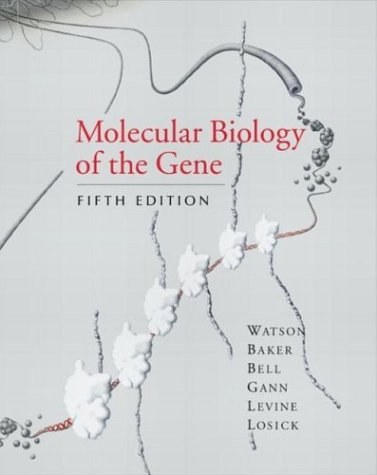Molecular Biology of the Gene
Douban
James D. Watson / Tania A. Baker …
Übersicht
Every student package automatically includes a CD-ROM and access to a website containing tutorials, molecular models, and more.
The long-awaited Fifth Edition of James D. Watson's classic text, Molecular Biology of the Gene, has been thoroughly revised and is published to coincide with the 50th anniversary of Watson and Crick's paper on the structure of the DNA double- helix.
Despite being completely updated, the new edition retains the distinctive character of earlier editions that made it the most widely used book in molecular biology. Twenty-one concise chapters, co-authored by five highly respected molecular biologists, provide current, authoritative coverage of a fast-changing discipline. The completely new art is printed in full colour for the first time.
Divided into four parts, the first (Genetics and Chemistry) begins with an overview of molecular biology, placing the discipline in historical context and introducing the basic chemical concepts that underpin our description of molecular biology today. The second part (Central Dogma) forms the heart of the book, describing in detail the basic mechanisms of molecular biology. The third part of the book (Regulation) deals with how gene expression is regulated - from the examination of basic mechanisms that regulate gene expression in bacterial and eukaryotic systems, to a description of how regulation of gene expression lies at the heart of the process of development. Recent findings from sequencing whole genomes of several animals have revealed that they all share essentially the same genes. The last chapter in the regulation section looks at how changes in gene regulation can account for how different animals can be made from the same genes. The final part of the book (Methods) deals with the techniques and methods used in molecular biology.
[Contents]
I. CHEMISTRY AND GENETICS.
1. The Mendelian View of the World.
2. Nucleic Acids Convey Genetic Information.
3. The Importance of Weak Chemical Interactions.
4. The Importance of High Energy Bonds.
5. Weak and Strong Bonds Determine Macromolecular Interactions.
II. CENTRAL DOGMA.
6. The Structures of DNA and RNA.
7. Chromatin and the Nucleosome.
8. The Replication of DNA.
9. The Mutability and Repair of DNA.
10. Homologous Recombination of DNA.
11. Site Specific Recombination and Transposition of DNA.
12. Mechanisms of Transcription.
13. The Processing of RNA.
14. Translation.
15. The Genetic Code.
III. REGULATION.
16. Gene Regulation in Prokaryotes.
17. Gene Regulation in Eukaryotes.
18. Gene Regulation in Development.
19. Comparative Genomics and the Evolution of Animal Diversity.
IV. METHODS.
20. Techniques of Molecular Biology.
21. Model Systems: Cells and Viruses.
[Features]
Early chapters on chemical and molecular interactions give a richer context to the material that follows and stress the importance of weak chemical interactions in biology.
The text has balanced coverage of prokaryotic and eukaryotic systems.
Important experiments and techniques relevant to chapter concepts are revealed in boxes in every chapter. These include recent techniques from the fields of genomics and bioinformatics.
Quantitative and critical thinking end-of-chapter questions allow students to apply their knowledge of the chapters key concepts.
An all new art programme features more than 750 line drawings in full colour. In addition, the art in the text has been integrated into animations on the accompanying CD-ROM and website.
The lively, incisive writing style that characterized earlier editions is once again a hallmark in the new edition.
Integrated media helps students better understand complex structures and molecular interactions. The CD-ROM and website offer animated tutorials, critical thinking exercises, and 3-D interactive molecular models in Chime.

